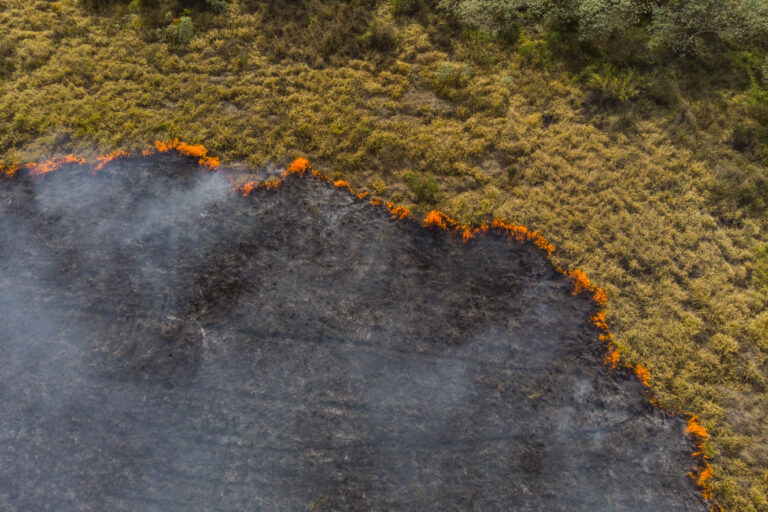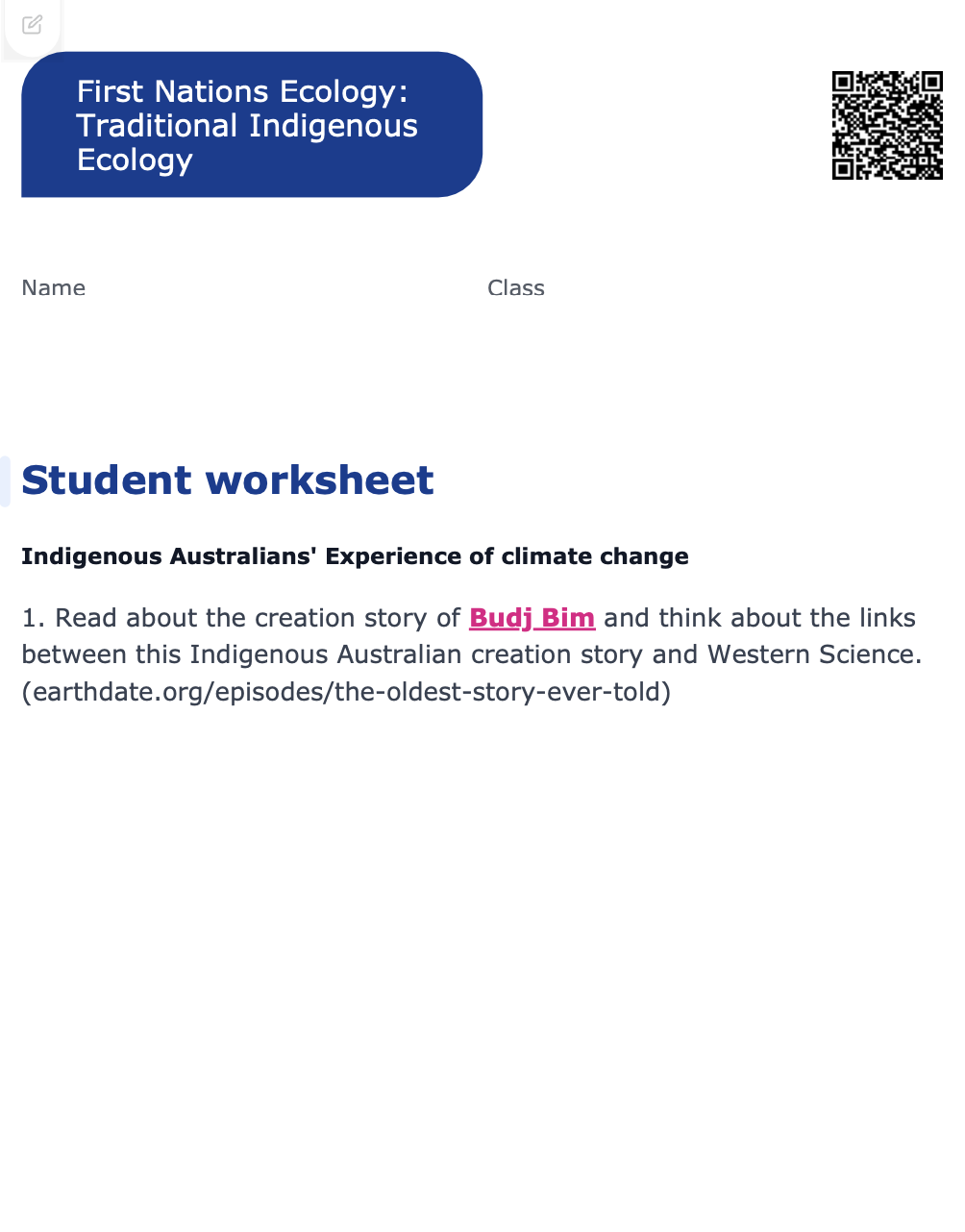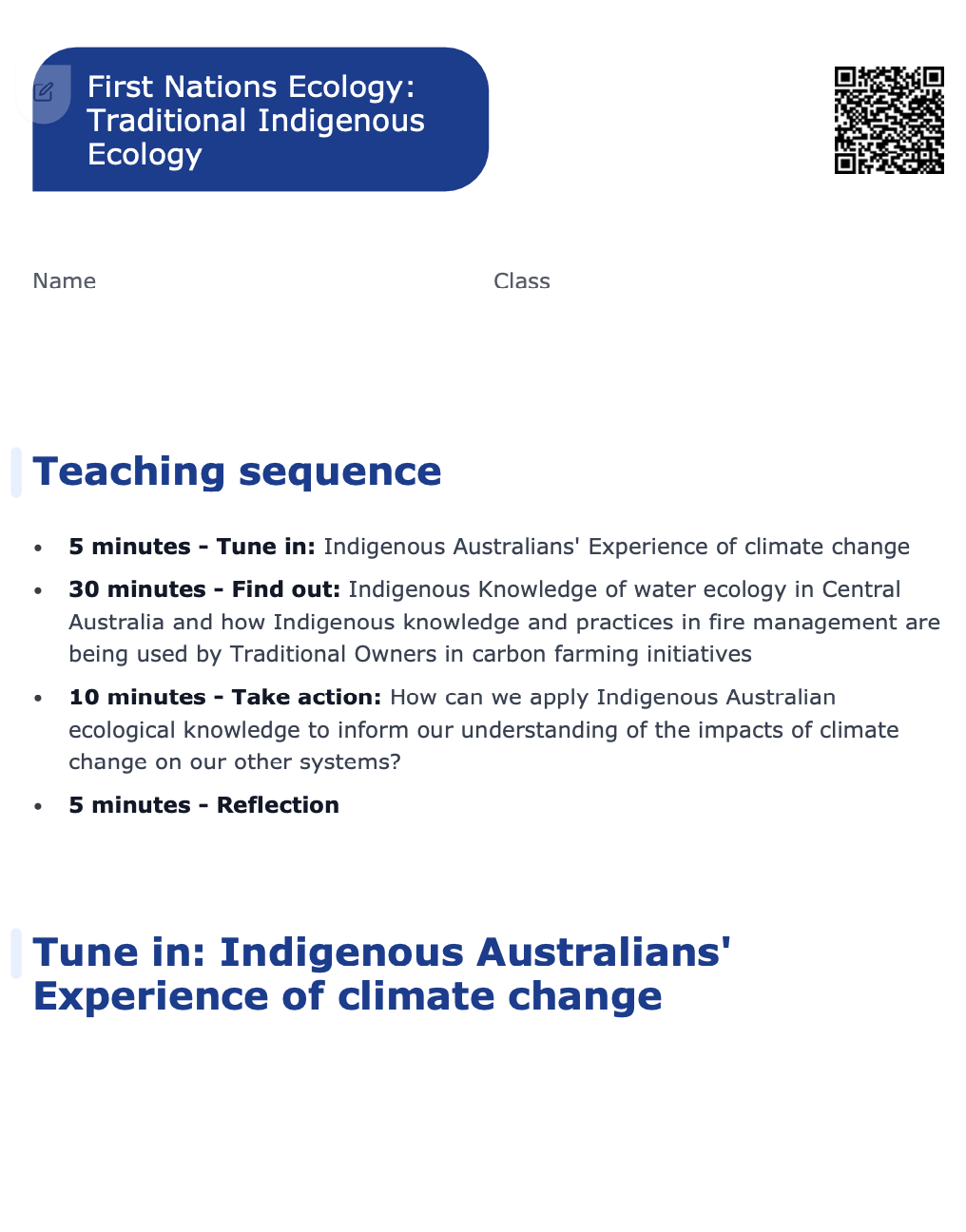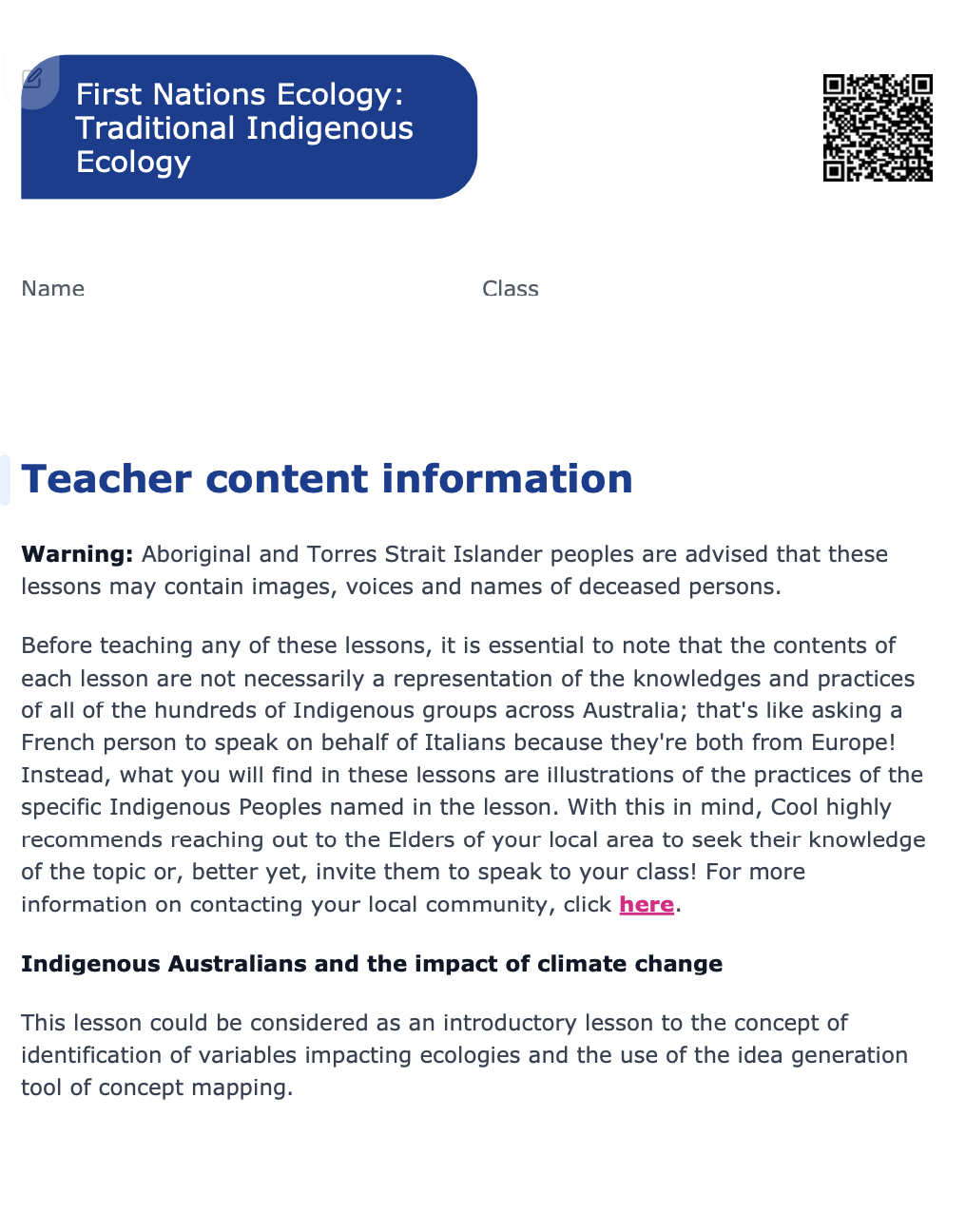Lesson summary
Exploring how Indigenous Australians’ understanding of and adaptation to changing ecologies such as water ecology and fire management contributes to scientific knowledge and practices being adopted more broadly by society
Learning intentions:
Students will...
- recognise that changes in climate and ecology have been experienced, collated and communicated by Indigenous Australians for millennia.
Success criteria:
Students can...
- describe how Indigenous Australian knowledge of changing ecologies is being reaffirmed by, as well as contributing to, Western Scientific knowledge
- define and communicate the multiple variables impacting water ecology in Central Australia
- define and communicate the relationship between Indigenous fire-burning practices and the generation of carbon credits in contemporary Australia.
Lesson guides and printables
Lesson details
Curriculum mapping
Australian Curriculum (v9.0) content descriptions:
Science:
Students learn to:
- Analyse the key factors that contribute to scientific knowledge and practices being adopted more broadly by society (AC9S10H03).
General capabilities: Literacy, Ethical Understanding, Personal and Social Capability
Syllabus outcomes: SC5-15LW
Cross-curriculum priority: Sustainability, Aboriginal and Torres Strait Islander Histories and Cultures.
Relevant parts of Year 10 achievement standards:
Students can analyse the key factors that influence interactions between science and society
Resources required
- Computer
- Digital Mind Map tool (optional)
- Earth Date Fact Sheet – The Oldest Story Ever Told
- Projector
- Reflection Worksheet 4 C’s Thinking Routine
Skills
This lesson is designed to build students’ competencies in the following skills:
- collaboration
- critical thinking
- prototyping
- curiosity
- adaptability
- ethical understanding
- empathy
- intercultural understanding
- creativity
- communication
- reflection
Additional info
Warning: Aboriginal and Torres Strait Islander peoples are advised that these lessons may contain images, voices and names of deceased persons.
Level of teacher scaffolding: Medium - facilitate class discussion; teach the tool of concept mapping.
This is an original Cool+ lesson.




Welcome back!
Don't have an account yet?
Log in with:
By signing up to Cool.org you consent and agree to Cool's privacy policy to
store, manage and process your personal information. To read more, please see
our privacy policy here(Opens in new tab).
Create your free Cool.org account.
Many of our resources are free, with an option to upgrade to Cool+ for premium content.
Already have an account?
Sign up with:
By signing up to Cool.org you consent and agree to Cool's privacy policy to
store, manage and process your personal information. To read more, please see
our privacy policy here(Opens in new tab).